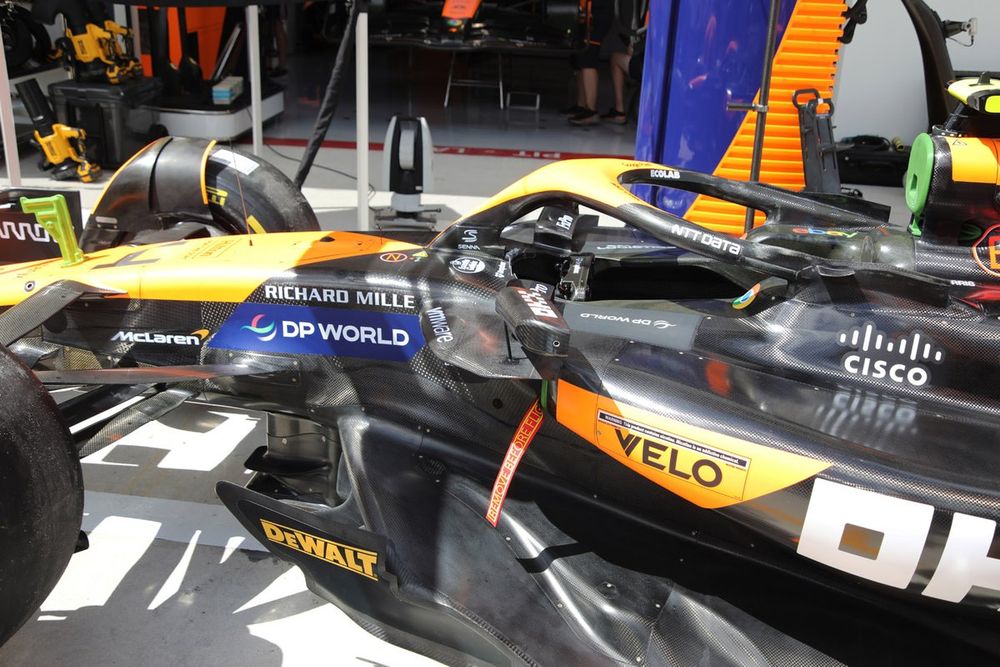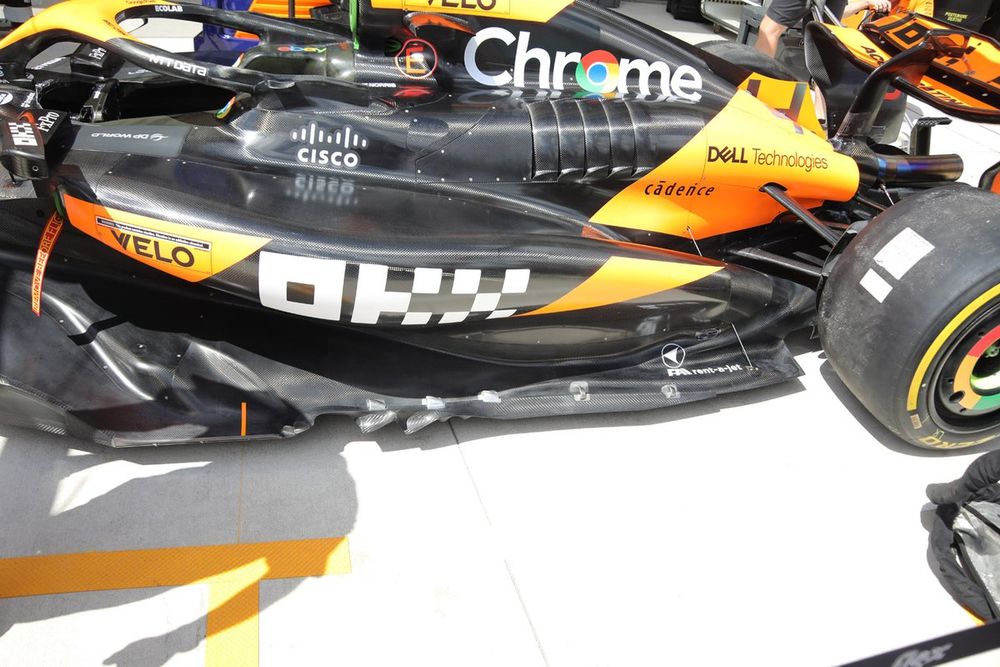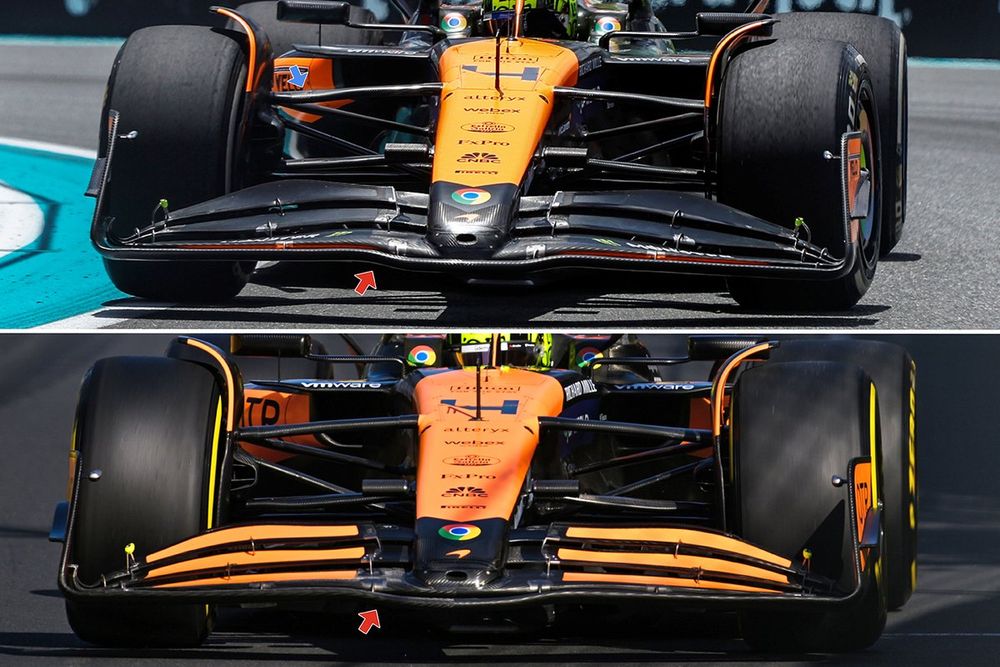For its debut weekend, the entire suite of new parts has been fitted to Lando Norris’ MCL38, while Oscar Piastri will have to wait until Imola to see the full advantages on offer, as only half of the new components have been installed on his machine.
The changes made aren’t new or revolutionary, with the team opting to make subtle alterations to a range of components so that they all complement one another and increase performance across the car’s entire aerodynamic map.
McLaren MCL38 front wing comparison
Photo by: Uncredited
This obviously starts with the front wing, with the most significant change made to the shape of the mainplane. The central section now has a much wider and squarer profile than before, while a more acute transition into the outboard sections has been employed (red arrows).
Consequently, there are also changes in the chord distribution of the upper flaps across their span, while the non-moveable inboard sections have also been revised.
To take advantage of the changes made to the front wing, the front suspension’s geometry and fairings have been altered too, with their angle of incidence changed and their geometry across their span also amended (see blue arrow, for example).
Meanwhile, the front brake duct and winglets have also been fettled to leverage performance from the changes upstream and help nudge the airflow to the surfaces that have been adjusted downstream.


As you’d expect, given it has been an area of considerable focus of these regulations, McLaren has made the biggest changes to the MLC38’s floor, sidepod bodywork and engine cover.
The sidepods follow the trend under these regulations of finding aerodynamic performance from the trade-off of reducing the size of the inlet and using that to reconfigure and increase the size of the undercut.
This has the knock-on effect of enabling changes to be made to the shape of the sidepod’s flank, which narrows the bodywork in the mid-line cutout and creates more of a high-waisted arrangement further down the length of the bodywork.
Meanwhile, complementary changes have also been made to the floor and edge wing alongside, while there are undoubtedly changes beneath the surface that are out of view.
The alterations made to the sidepod’s inlet are accompanied by subtle changes to the mid-wing above the inlet, as it has been extended forward when compared with the previous specification.
The waterslide channel on the upper surface of…
Click Here to Read the Full Original Article at Autosport.com – Formula 1 – Stories…

